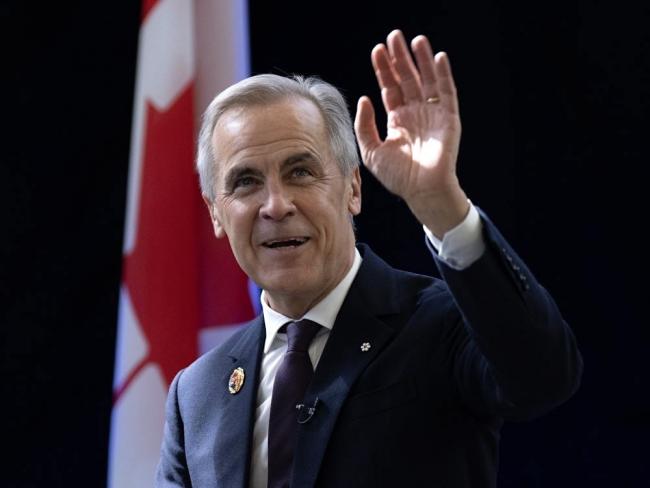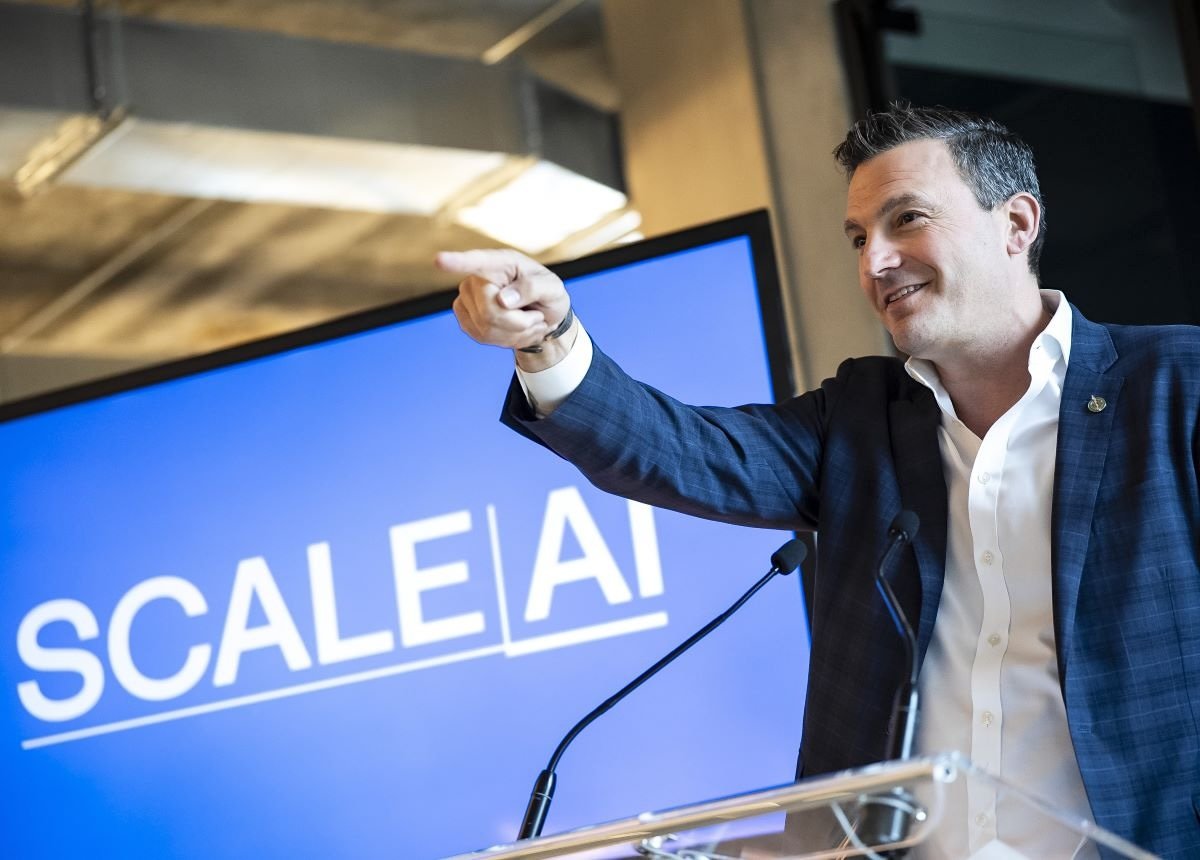Articles Menu

Prime Minister Mark Carney’s Liberal government is ramping up its drive for artificial intelligence glory while deepening an alignment with Canada’s own “tech bros” movement.
In September, Artificial Intelligence Minister Evan Solomon announced a new “AI Strategy Task Force” that will advise the federal government on how the country can “achieve our artificial intelligence ambition.”
At the same time, Solomon launched a public consultation to “help shape Canada’s approach to AI,” a technology he calls “a revolution.”
The government deemed 30 days sufficient for public feedback — a “national sprint,” in the words of Solomon.
According to a recent Leger opinion poll, 85 per cent of Canadians believe AI “should be regulated by governments to ensure ethical and safe use.” In September, dozens of digital policy experts, public health professionals, lawyers, educators, artists, writers and civil society leaders urged Carney to prioritize digital sovereignty while reining in Big Tech and ensuring the country’s “digital infrastructure remains true to Canadian values.”
The Carney Liberals’ blithe embrace of Big Tech’s vision of AI strongly suggests the government is not listening.
Indeed, soon after becoming Canada’s inaugural minister of artificial intelligence and digital innovation, Solomon pledged that artificial intelligence companies would not be subject to “over-indexing on warnings and regulation.”
At best, it would appear Solomon, and Carney, for that matter, have swallowed the marketing pitch of technology companies in a misguided pursuit of economic growth. In so doing, they have inexcusably ignored the glaring threats posed to Canada’s sovereignty and security, and the well-being of its citizens.
How else to explain the absurdity of a federal minister claiming that “AI is democratizing intelligence” even as educators and students warn of the erosion of critical thinking skills?
Or unabashedly admitting to asking AI to produce a briefing note on existing legislation — an exercise that turned out to be badly flawed. Or suggesting ChatGPT could be a solution to society’s loneliness epidemic even as stories mount of AI leading to psychotic delusions and teen suicide.
Promised advancements in health, science and industry are proving, to put it mildly, elusive. A 2025 University of Waterloo study found that OpenAI’s large language model ChatGPT-4o gave incorrect answers to open-ended medical diagnostic questions nearly two-thirds of the time. A large, international study published this month by the BBC with participation from the CBC determined that AI assistants are routinely misrepresenting news content, producing significant errors 45 per cent of the time. A recent Massachusetts Institute of Technology study found that 95 per cent of organizations investing in AI see no measurable return on investment, while a Stanford University study uncovered workplace tensions as up to 40 per cent of employees admit to having to clean up AI-generated “workslop” from their colleagues or bosses.
Such discoveries are leading to growing predictions of an economic shock and stock market “bubble” about to pop.
Harms beyond the hype
The usefulness of AI technologies to date remains underwhelming. But the depth of the challenges posed, particularly from “chat”-type generative AI systems, seems jarring. AI is being used as a tool to sow disinformation and spread hate. It threatens an end of critical thinking and the integrity of our justice system.
There are additional concerns:
Worsening climate change. The data centres housing the servers and other computer infrastructure needed for AI systems require large tracts of land and tremendous amounts of energy. In the absence of a green energy transformation, the AI revolution will dramatically increase carbon emissions. These machines are at risk of overheating; cooling them requires enormous amounts of water, with one large data centre consuming the water needed for a city of 50,000 people.
Widening wealth inequality. AI is most commonly deployed as an automation-type job replacement tool, most acutely affecting entry-level jobs and young workers while delivering profits that will make some of the wealthiest people on the planet richer. A 2024 study challenged the “traditional view of technological advancement as a driver of widespread prosperity,” finding that “the benefits of AI capital... could worsen wealth disparities.” The Carney government is already preparing to replace public servants and public services with AI tools.
Wrecking artistic creativity. Major AI companies are fending off — or settling — lawsuits for stealing the copyrighted creative works of writers, musicians and other artists to train their chatbot machines while simultaneously flooding the internet with AI-generated content that political anthropologist Eric Reinhart calls “a kind of spectral mimicry, a simulacrum that may deceive the eye but not the soul.” Or, as Margaret Atwood puts it, “AI is a crap poet.”
The Trump factor. U.S. President Donald Trump has repealed former president Joe Biden’s executive order setting out public-interest rules for artificial intelligence and is using trade disputes to try to restrict other jurisdictions from regulating AI and to encourage policy concessions favouring U.S. Big Tech. He is also on a global hunt for the critical mineral resources needed to run AI machines. His government recently purchased a stake in two Canadian critical mineral companies — an unprecedented step that one expert says raises concerns.
By contrast, the Carney government looks woefully ill-prepared, or, worse, wilfully ignorant. Energy Minister Tim Hodgson dismissed concern over the Trump administration’s investments in Canadian companies, saying it was not something “that bothers us at this time.”
Such weakness is easily exploited by Trump and U.S. tech companies — see digital services tax capitulation — and now Canada’s increasingly MAGA-sounding tech industry is poised to pounce.
Importing Silicon Valley’s radical agenda
Soon after Solomon announced the AI Strategy Task Force, it was criticized for being too industry-heavy. Two particular names stand out: Joelle Pineau, chief artificial intelligence officer at Cohere, and Dan Debow, chair of Build Canada.

Cohere having a presence on the panel is unsurprising, but still concerning. The company is a Canadian rival to U.S. AI firms, and Pineau is prominent in the industry. According to the lobbyist registry, Cohere has held 14 meetings with federal cabinet ministers, including Solomon, and senior Liberal political staff in the past five months alone. In August, Solomon announced the government had signed an agreement with Cohere to identify where “AI tools can improve public services.”
Cohere’s reported connection to the U.S. AI firm Palantir increases the alarm. Led by MAGA funder Peter Thiel, Palantir sees the Canadian company’s models being deployed to Palantir customers, possibly including U.S. defence and intelligence agencies.
Build Canada’s role on the task force is more suspect, as the coalition of tech leaders is aggressively pushing a radical public policy agenda that one analyst labelled “indistinguishable from Silicon Valley clichés.” Among proposals including punitive immigration reform and tax changes benefiting the wealthy are two recommendations that stand out for their blatant self-interest and departure from what a majority of Canadians voted for in last spring’s election.
The group calls on the federal government to “Make Canadian Government Services AI-First.” In its accompanying memo, Build Canada seeks to ensure “AI is integrated across federal agencies” within a six-month timeline, including automating processes in taxation, immigration, employment and social development, and that “top global AI talent is embedded in the federal government.”
This is also the organization that claims to have launched Canada’s “first AI member of Parliament,” a tool that “won’t knock on doors” but instead analyzes proposed legislation using OpenAI’s GPT-5, through a “pro-growth lens.”
Build Canada also outlines a plan for more productive government through massive spending cuts, including an up to 20 per cent decrease in the public service workforce, a 17 per cent cut to Indigenous Services’ grants, a 25 per cent reduction to the CBC, elimination of all funding to the department for women and gender equality and the Canada Race Relations Foundation, and a freeze on health and social transfers to the provinces.
There are shades of dystopian technocracy and echoes in Liberal government rhetoric in these proposals.
What Canada should be doing about AI’s perils
We need to refocus the discourse on people. There are pathways to doing so.
The European Union is planning AI legislation to address addictive design, unfair personalization and holding influencers accountable. Closer to home, the B.C. government is putting some guardrails around Big Tech’s demands. Oxford University and the Clooney Foundation for Justice are collaborating to redirect and leverage AI’s potential toward the public good. Canadian citizens themselves are proactively protecting their communities from exploitation by AI companies, with B.C. resident Kathryn Barnwell reminding us that “life on this planet is sustained by water. It is not sustained by data.”
It is right to demand better of the Carney Liberals on AI policy.
Certainly, protecting digital sovereignty is a priority, although Solomon appears to be hedging on the government’s “sovereign cloud” promise.
Yes, clear-eyed identification of where, how and when AI systems can be deployed to enhance — not degrade or replace — the human experience is worth pursuing. Of course, AI opportunities that economically benefit the many, not just the few, should be explored.
The risk to our country is not that Canadians will be too cautious in embracing AI, but that our government will act too rashly, tying our democracy, prosperity, security, sovereignty and collective well-being to a questionable product and its reckless promoters.
Carney and Solomon are no longer private-interest investors and messengers; they are public-interest regulators and defenders. They need to do the jobs Canadians elected them to do.
[Top photo: Welcome, brave new robots! Prime Minister Mark Carney ignores the dark side of Big Tech’s AI agenda. Photo by Adrian Wyld, the Canadian Press.]